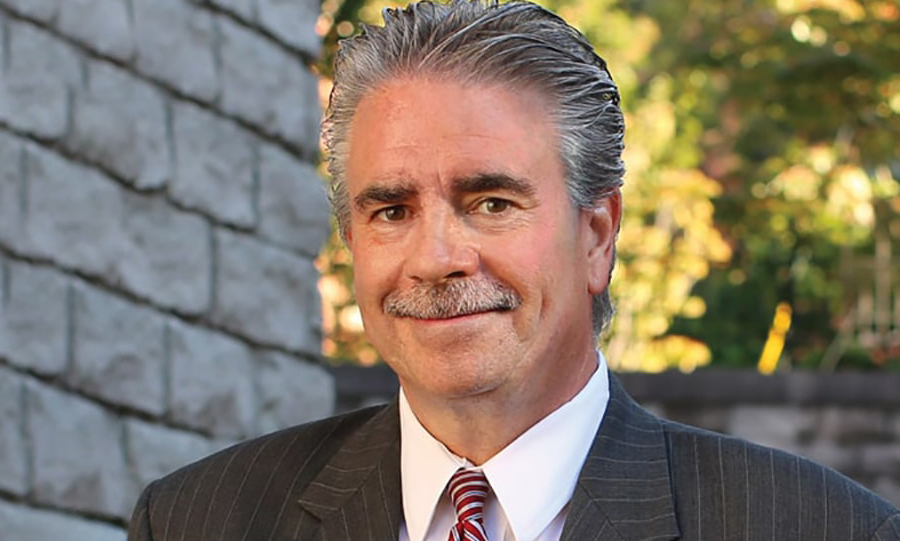The federal government has taken action with the aim to provide certainty to American employers and workers about how to handle absences necessitated by the coronavirus pandemic. The Families First Coronavirus Response Act contains two main provisions that address employee absences – the Emergency Family and Medical Leave Expansion Act (“EFMLEA”) and the Emergency Paid Sick Leave Act (“EPSLA”).
The acts address employment and tax issues as follows:
Emergency Family and Medical Leave Expansion Act
The EFMLEA provides expanded temporary coverage under the Family Medical Leave Act (“FMLA”) for situations related to the coronavirus pandemic. This law becomes effective on April 2, 2020, and will remain in place until December 31, 2020.
Which employers and employees are covered under this law?
- The definition of a “covered employer” is different under the EFMLEA than the FMLA.
- Employers with fewer than 500 employees are covered and must comply.
- The concentration of 50 or more employees within a 75-mile radius (applicable under other provisions of the FMLA) does not apply to the EFMLEA.
- The Act includes language permitting the Secretary of Labor to exempt small businesses with fewer than 50 employees if the required leave under EFMLEA would jeopardize the viability of their business.
- Employees are eligible for relief under the EFMLEA after working for the employer for at least 30 calendar days.
- This is a significant change from the employee eligibility requirements set forth in the FMLA, where leave is only available to employees who have worked for 12 months and 1,250 hours in the immediate preceding 12 months prior to taking leave.
- Covered employees may take up to 12 weeks of job-protected leave to allow an employee who is unable to work or telework to care for the employee’s child under the age of 18 if the child’s school or day care is closed due to a public health emergency.
- The initial 10 days of EFMLEA leave is unpaid. After 10 days, the remainder of the leave is paid.
- During the initial 10 days unpaid leave, an employee may elect to substitute any accrued paid leave (such as vacation, PTO, or sick leave) to cover some or all of the 10-day unpaid leave period. However, unlike the FMLA, the employer cannot require this.
- If an employee qualifies for both EFMLEA and Emergency Paid Sick Leave (see below), the employee may use the Emergency Paid Sick Leave at the same time as the first 10 days of EFMLEA leave that would normally be unpaid.
- After the 10-day unpaid leave period expires, the employer generally must pay full-time employees at two-thirds of their regular rate under the Fair Labor Standards Act, multiplied by the number of hours the employee would normally be scheduled to work. If the employee works varying hours, the employer should look at the prior six-month period to determine the average number of hours worked per week prior to the leave.
- Paid leave under the EFMLEA is limited to a maximum of $200 per day per employee, and a maximum $10,000 in total per employee for the duration of the leave. After the $10,000 maximum is reached, the remainder of the leave, up to 12 weeks total, is unpaid.
- Employees who work part-time or an irregular schedule are entitled to be paid based on the average number of hours the employee worked for the six months prior to taking EFMLEA leave.
- Employees who have worked for less than six months prior to leave are entitled to the employee’s reasonable expectation at hiring of the average number of hours the employee would normally be scheduled to work.
- The new legislation is silent on required documentation. Until more guidance is provided on this issue, employers should have employees provide their own written statement about the reason for leave and for whom they are caring for during the leave.
- Just like the FMLA, employers are required to return employees on EFMLEA leave to work at the end of the leave.
- The only exception to this requirement is for employers with fewer than 25 employees under the following conditions:
- The employee’s position no longer exists because of economic or operating conditions caused by the public health emergency; AND
- The employer makes reasonable efforts to restore the employee to an equivalent position with equivalent pay, benefits, and terms and conditions of employment for a one-year period. “Reasonable efforts” include the duty to contact the employee when an equivalent position becomes available over this one-year period.
- The Department of Labor will publish a poster in the next several weeks that employers must post in the workplace.
- Employers should also issue a policy to employees notifying them of the availability of this leave.
- Subject to a federal, state, or local quarantine or isolation order related to COVID-19;
- Advised by a health care provider to self-quarantine due to COVID-19 concerns;
- Experiencing symptoms of COVID-19 and is seeking a medical diagnosis;
- Caring for an individual subject to a federal, state, or local quarantine or isolation order, or who has been advised by a health care provider to self-quarantine due to COVID-19 concerns;
- Caring for the employee’s child if the child’s school or place of care is closed, or the child’s care provider is unavailable due to public health emergency; or
- Experiencing any other substantially similar condition specified by the Secretary of Health and Human Services, the Secretary of the Treasury, and/or the Secretary of Labor.
- All employers having fewer than 500 employees are covered.
- However, the Department of Labor has broad authority to exempt employers with fewer than 50 employees if the requirement to provide leave would jeopardize the viability of the business as a going concern.
- All full-time and part-time employees are immediately eligible with no minimum period of employment.
- Full-time employees are entitled to 80 hours of paid leave.
- Part-time employees are entitled to be paid for the number of hours per day they worked on average over the prior two-week period.
- Leave taken for the following reasons will be paid at the employee’s regular rate of pay subject to a limit of $511 per day and $5,110 total per employee:
- The employee is subject to a federal, state, or local quarantine or isolation order
- The employee has been advised by a health care provider to self-quarantine;
- The employee is experiencing symptoms of coronavirus and is seeking a medical diagnosis.
- Leave taken for the following reasons will be paid at two-thirds of the employee’s regular rate of pay subject to a limit of $200 per day and $2,000 total per employee:
- The employee is caring for a person who is subject to a federal, state, or local quarantine or isolation order or who has been advised by a health care provider to self-quarantine;
- The employee is caring for a son or daughter of the employee whose school or day care is closed; or
- The employee is experiencing any other substantially similar condition specified by the Secretary of Health and Human Services, the Secretary of the Treasury, and/or the Secretary of Labor.
- If an employee qualifies for both EFMLEA and Emergency Paid Sick Leave, the employee may use the leave provided for under the Emergency Paid Sick Leave Act at the same time as the first 10 days of the EFMLEA leave that would normally be unpaid.
- Employees are still entitled to take whatever paid leave was available to them before the passage of this Act, and employers cannot change their leave polices after the passage of this Act to provide less leave than has already been promised.
- Employers cannot require that employees take leave under existing policies first. In fact, employees have the option to take Emergency Paid Sick Leave before any other leave provided by the employer if they prefer.
- Like the new provisions detailed in the EFMLEA, Paid Sick Leave legislation is silent on required documentation. Until more guidance is provided on this issue, employers should have the employee provide his or her own written statement about the reason for leave and for whom he or she is caring during the leave, if applicable.
- After the first day of leave, the employer can require the employee to follow reasonable notice procedures to continue receiving paid sick time.
- The Department of Labor will publish a poster in the next few weeks that employers must post in the workplace.
- Employers should also issue a policy to employees notifying them of the availability of this leave.
When can an employee take leave under the EFMLEA?
Is EFMLEA leave paid or unpaid?
How is EFMLEA pay calculated for non-full time employees?
What documentation is required to establish that the employee needs leave under the EFMLEA?
What is the employer’s obligation to return the employee to work after the leave?
How should an employer notify employees of this new leave of absence?
Emergency Paid Sick Leave Act
This section of the Families First Coronavirus Response Act also becomes effective on April 2, 2020, and remains in effect until December 31, 2020.
The EPSLA allows an eligible employee to take paid sick leave where the employee cannot work or telework because the employee is:
Which employers and employees are covered under this law?
How much compensation will an employee be paid during Emergency Paid Sick Leave?
Can an employee use leave provided for under the Emergency Paid Sick Leave Act to cover the first 10 days of EFMLEA leave that is unpaid?
How does Emergency Paid Sick Leave work in conjunction with other paid time off already offered by the employer?
What documentation is required to establish that the employee needs Emergency Paid Sick Leave?
How should an employer notify employees of Emergency Paid Sick Leave?
Payroll Credit for Required Paid Sick Leave Under EPSLA
The Act allows employers to receive a refundable tax credit equal to 100% of qualified paid sick leave wages paid by the employer for each calendar quarter. Additionally, the credit may be increased by certain qualified health plan expenses that are allocable to the wages paid under the EPSLA. Qualified health plan expenses means amounts paid or incurred by an employer to provide and maintain a group health plan to the extent that the payments are not includible in the taxable income of employees under Section 106(a) of the Internal Revenue Code of 1986, as amended. That section excludes from an employee’s taxable income amounts paid by an employer for employer-provided coverage under an accident or health plan.
Employers may claim the credit to offset their obligation for the employer portion of Social Security taxes (6.2%) and the employer portion of the hospital insurance portion (1.45%). Qualified sick leave wages means wages that are required to be paid by the employer under the EPSLA. The amount of the credit depends on the reason for the sick leave. For qualified sick leave wages paid to employees who (i) are subject to a federal, state, or local quarantine order related to COVID-19, (ii) have been advised by a health care provider to self-quarantine due to concerns related to COVID-19, or (iii) experience symptoms of COVID-19 and seek diagnosis, the maximum amount of wages considered is capped at $511 per day. The cap is $200 for amounts paid to employees to care for a family member or a child whose school or place of care has been closed. If the total credit amount exceeds an employer’s liability for Social Security taxes, then the excess credit is refundable to the employer.
Payroll Credit for Required Paid Family Leave Under EFMLEA
The Act also provides a separate refundable tax credit equal to 100% of qualified family leave wages by an employer for each calendar quarter. This credit may also be increased by certain qualified health plan expenses allocable to the wages paid under the EFMLEA.
This credit can be used to offset the employer portion of Social Security taxes (6.2%) and the employer portion of the hospital insurance portion (1.45%). Qualified family leave wages are those wages required to be paid by the EFMLEA. The amount of qualified family leave wages taken into account for each employee is capped at $200 per day and $10,000 for all calendar quarters. Employers will receive a refund for credits exceeding their liability for Social Security taxes.
Credit for Sick Leave for Self-Employed Individuals
Self-employed individuals are also given assistance under the Act. The credit provides for a refundable tax credit equal to 100% of the qualified sick leave equivalent amount for self-employed individuals subject to limitations discussed below. Self-employed individuals who care for a family member or for a child whose school or place of care has been closed due to coronavirus are eligible for a refundable tax credit equal to 67% of a qualified sick leave equivalent amount.
This credit is used to offset self-employment tax and is refundable. An individual is eligible for the credit if they would be entitled to receive paid sick leave under the EPSLA if the individual was an employee of an employer (other than himself or herself). For eligible self-employed individuals who (i) are subject to a federal, state, or local quarantine order related to COVID-19, (ii) have been advised by a health care provider to self-quarantine due to concerns related to COVID-19, or (iii) experience symptoms of COVID-19 and seek diagnosis, the qualified sick leave equivalent is capped at the lesser of $511 per day or 67% of the average daily self-employment income for the taxable year per day. If the eligible self-employed individual who is caring for a family member or child whose school or place of care has been closed due to coronavirus, the qualified sick leave amount is capped at the lesser of $200 per day of the average daily self-employment income for the taxable year per day. Individuals are limited to those days in which the individual is unable to work for reasons that would entitle him or her to leave under the EPSLA.
Credit for Family Leave for Self-Employed Individuals
Finally, the Act provides for a refundable tax credit equal to 100% of a qualified family leave equality amount for eligible self-employed individuals. As with the sick leave tax credit, this credit is allowed to offset self-employment tax and is refundable.
Eligible self-employed individuals are those who would be entitled to receive paid family leave under the EFMLEA if the individual was an employee of an employer. The equivalent amount is capped at the lesser of $200 per day or 67% of the average daily self-employment income for the taxable year per day, including only those days that the individual would be entitled to receive paid leave under the EFMLEA.




